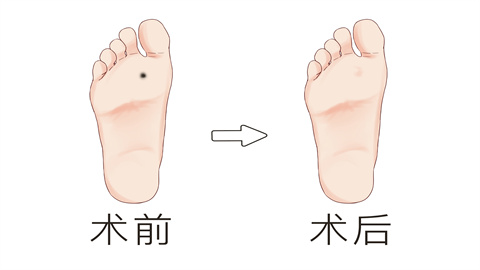How are black moles formed?
The formation of black moles may be related to hereditary factors, aging, excessive ultraviolet radiation, endocrine disorders, and skin inflammation. Treatment methods usually depend on the specific causes and may include observation, laser therapy, surgical excision, or medication. If any abnormalities occur, timely medical consultation is recommended. Detailed explanations are as follows:

1. Heredity: The formation of black moles is closely related to genetic factors. Some individuals, due to hereditary reasons, have higher distribution and activity levels of melanocytes in the skin, making them more prone to developing black moles. Generally, no special treatment is required unless the mole affects appearance or poses a risk of malignancy, in which case laser therapy or surgical removal may be considered.
2. Aging: With increasing age, the number of melanocytes in the skin may gradually increase while skin metabolism slows down, leading to melanin deposition and the formation of black moles. These moles typically appear in middle-aged and elderly individuals and may increase in number over time. Similarly, no special treatment is generally required unless there is a risk of malignancy or aesthetic concerns, in which case laser therapy or surgical excision may be considered.
3. Excessive Ultraviolet Radiation: Prolonged exposure to sunlight can stimulate melanocytes to produce more melanin, resulting in the formation of black moles, which may be accompanied by symptoms such as sunburn and pigmentation. Prevention of UV exposure is important, and protective measures such as applying sunscreen, wearing hats, and using umbrellas should be taken when outdoors.
4. Endocrine Disorders: Endocrine imbalances may increase the activity of melanocytes, leading to the formation of black moles. This may be accompanied by symptoms such as menstrual irregularities and mood swings. It is recommended to adjust lifestyle habits, and if necessary, take medications such as Propylthiouracil Tablets, Methimazole Tablets, or Propranolol Hydrochloride Tablets as directed by a physician. For existing moles, laser therapy or surgical excision may be considered depending on the situation.
5. Skin Inflammation: Inflammatory stimulation of the skin can increase the activity of melanocytes, leading to the formation of black moles. Accompanying symptoms may include itching and swelling. It is recommended to use medications such as Mometasone Furoate Cream, Fluticasone Propionate Cream, or Binghuang Fule Ointment under medical guidance. Once the inflammation subsides, existing moles may be treated with laser therapy or surgical excision depending on the situation.
Regular observation of changes in moles is recommended in daily life. If abnormalities such as significant enlargement, color change, or pain occur, prompt medical consultation and treatment are advised.






